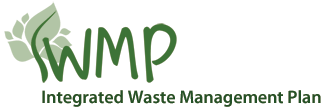Executive Summary
The development of an Integrated Waste Management Plan (IWMP) is a requirement for all government spheres responsible for waste management in terms of the National Environmental Management: Waste Act, 2008 (Act No. 59 of 2008) (hereinafter referred to as the “Waste Act’’) for government to properly plan and manage waste. These guidelines have been written to follow the waste handling process in accordance with the waste management hierarchy. This implies that Integrated Waste Management Plans (IWMP’s) should include all aspects of the waste management hierarchy. The guidelines provide a background for the compilation of Integrated Waste Management Plans which includes a short historical overview of IWMP’s to date and a basic description of the legal framework pertaining to IWMP development.
The development of an IWMP includes a situation analysis which includes a description of the population and development profiles of an area to which the plan relates, an assessment of the quantities and types of waste types that are generated in that area, a description of the services that are provided or that are available for the collection, minimisation, re-use, recycling, and recovery, treatment and disposal of waste and lastly it must include the number of persons in the area who are not receiving waste collection services. Furthermore the situation analysis must also be completed in terms of institutional, financial, political, legal and physical conditions which must also be translated into the desired end state.
Once the situation analysis has been completed a municipality must then define the desired end state for the overall management of waste. The desired end state sets out the goals and targets to achieve in the implementation of the IWMP. The desired end state should be completed in terms of institutional, financial, political, legal and physical conditions. All of these should be in relation to the situation analysis and goals and targets should have a target date by which they will be attained which is normally five years from the date the plan has been adopted.
The next section in the IWMP deals with the identification of alternatives to achieve the goals and targets that have been set in the desired end state. The identified alternatives should then be evaluated to assess environmental, technical, social, financial, institutional and organisational arrangements and impacts. The evaluation of alternatives will inform municipalities on choosing the best alternative to achieve its goals and targets set during the desired end state. It is crucial to develop an implementation plan for the implementation of an IWMP. This section must include a concise and clear description of instruments that will be used for implementing the IWMP. It must describe how institutional and organisational matters; financial matters; education and training and management of assets will be addressed in order to reach the goals and targets.
Performance assessment is the last step in the IWMP process, although this happens outside the development of the plan. Section 13 (3) of the Waste Act requires that annual performance reports be prepared in terms of section 46 of the Municipal Systems Act (MSA) and must contain information on the implementation of the municipal IWMP, including the information set out in paragraph (a) to (j) of subsection (2) insofar as it relates to the performance of the municipality.
Main menu - nice menus
Table of contents
- Executive Summary
- List of figures
- List of boxes
- List of tables
- List of graphs
- List of acronyms
- 1. Introduction
- 2. Contents of the IWMP's
- 3. Communication and stakeholder participation
- 4. Implementation instruments
- 5. Approval process
- 6. Reporting on implementation, monitoring and review
- 7. References

